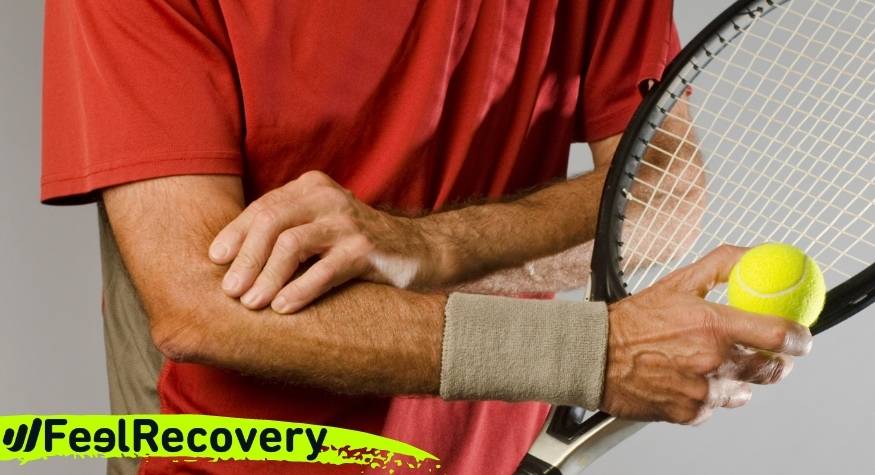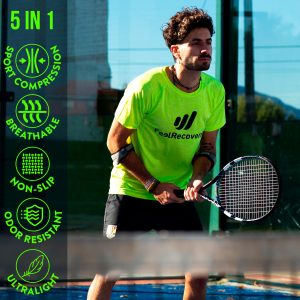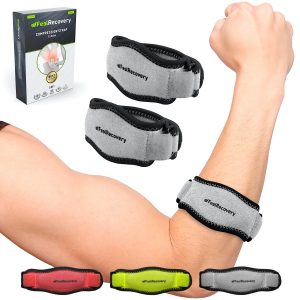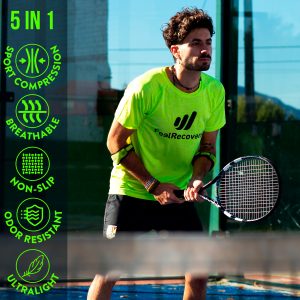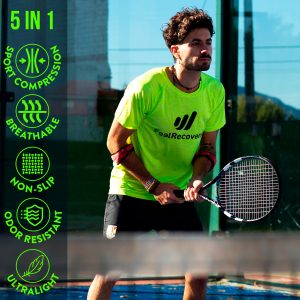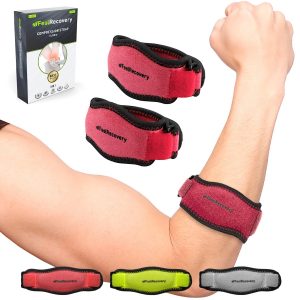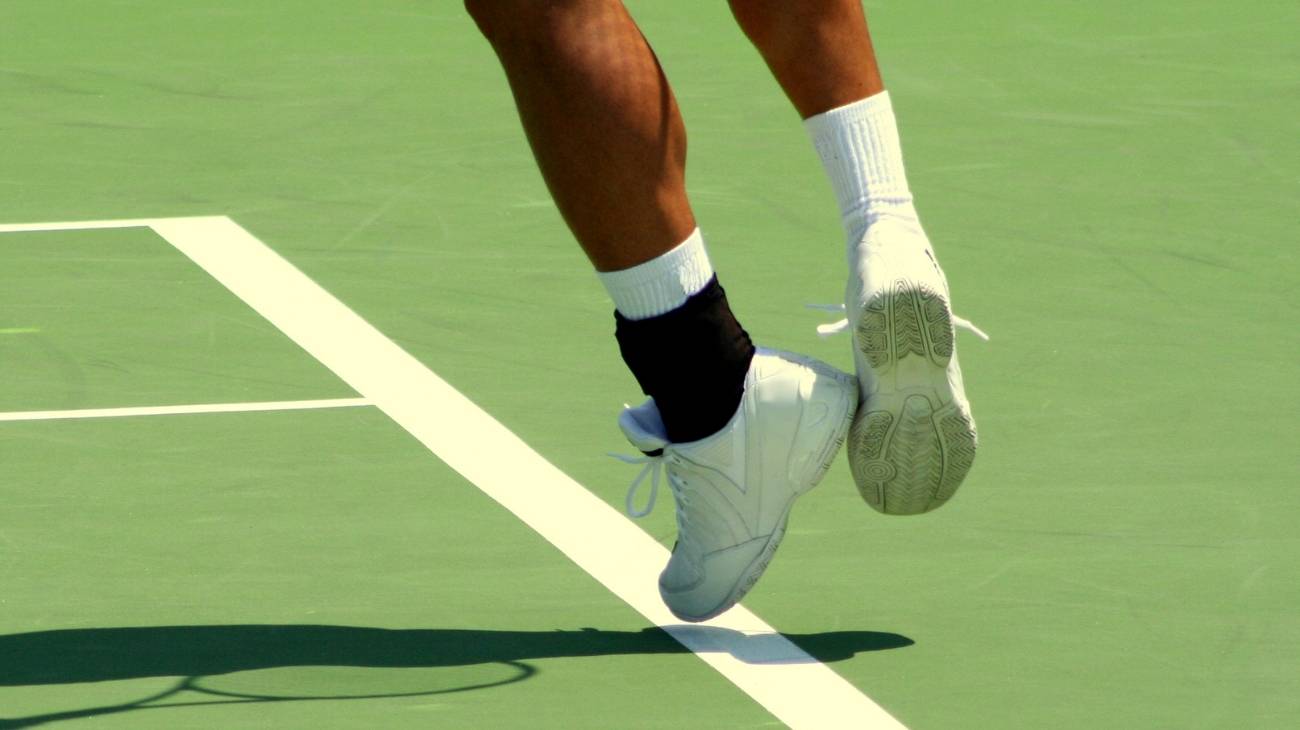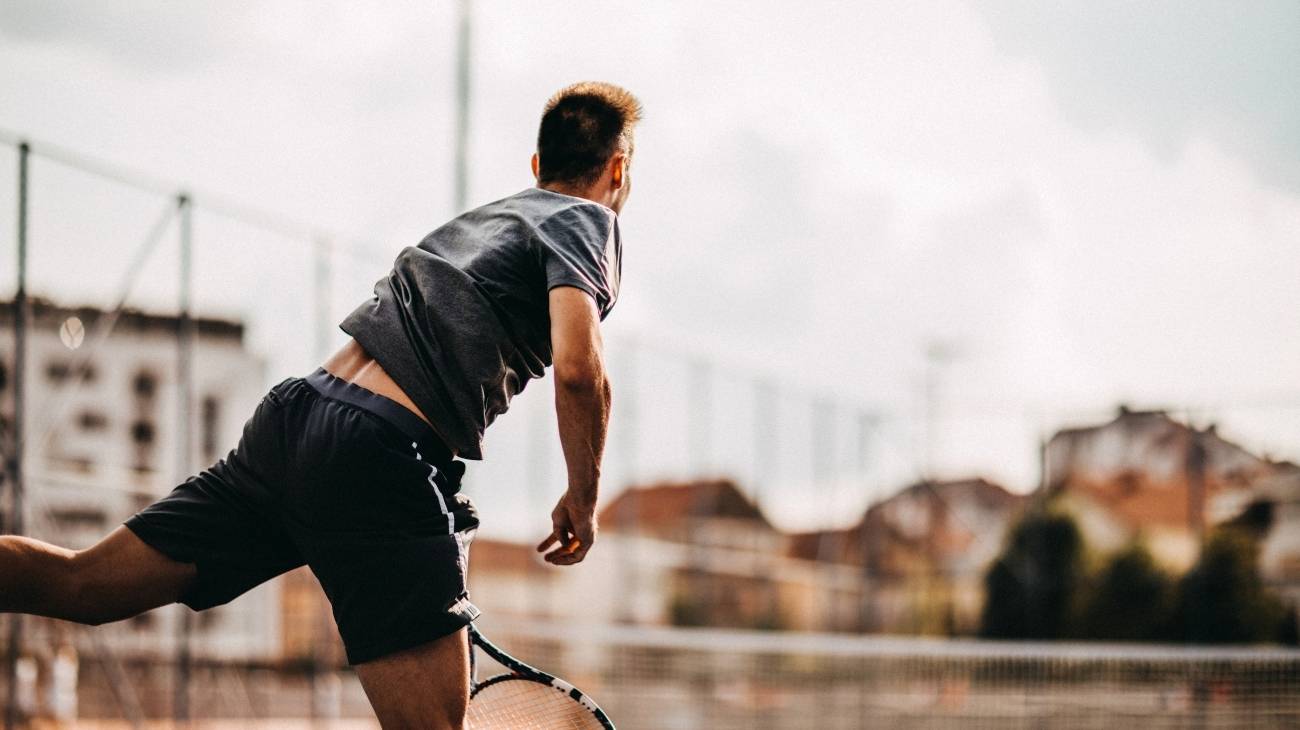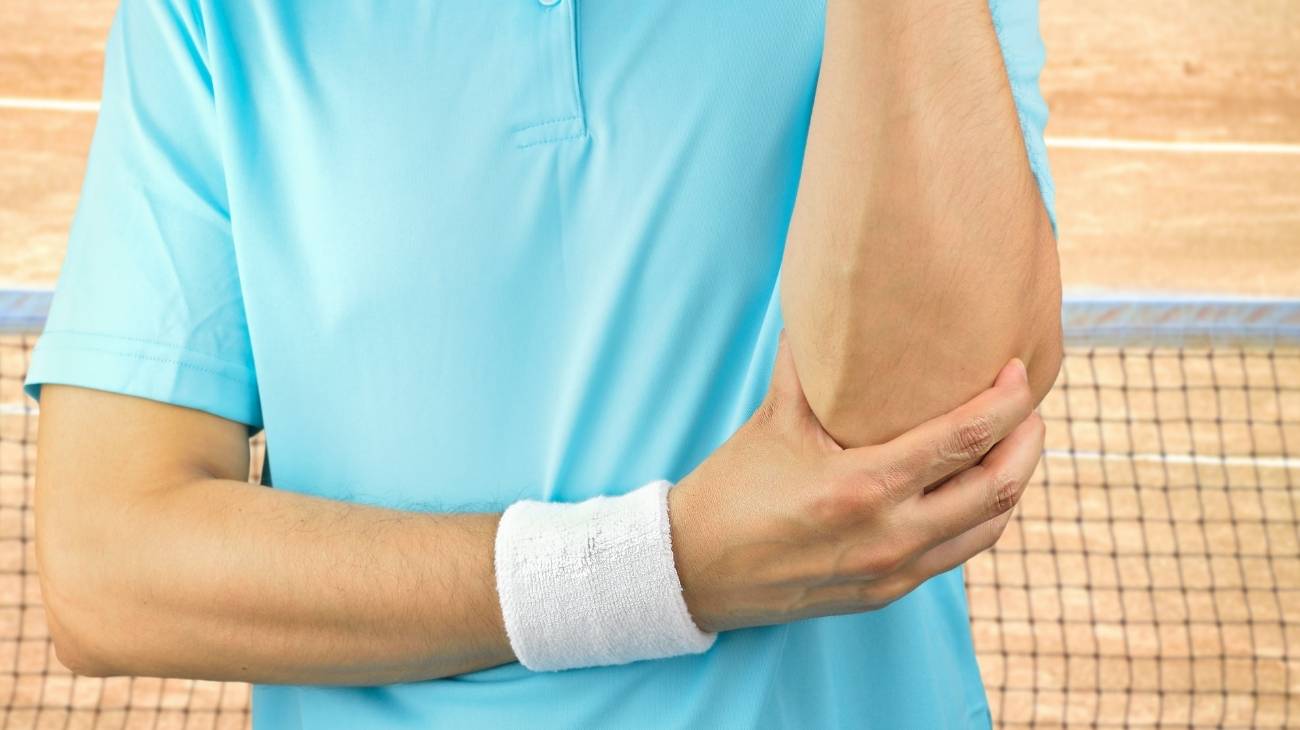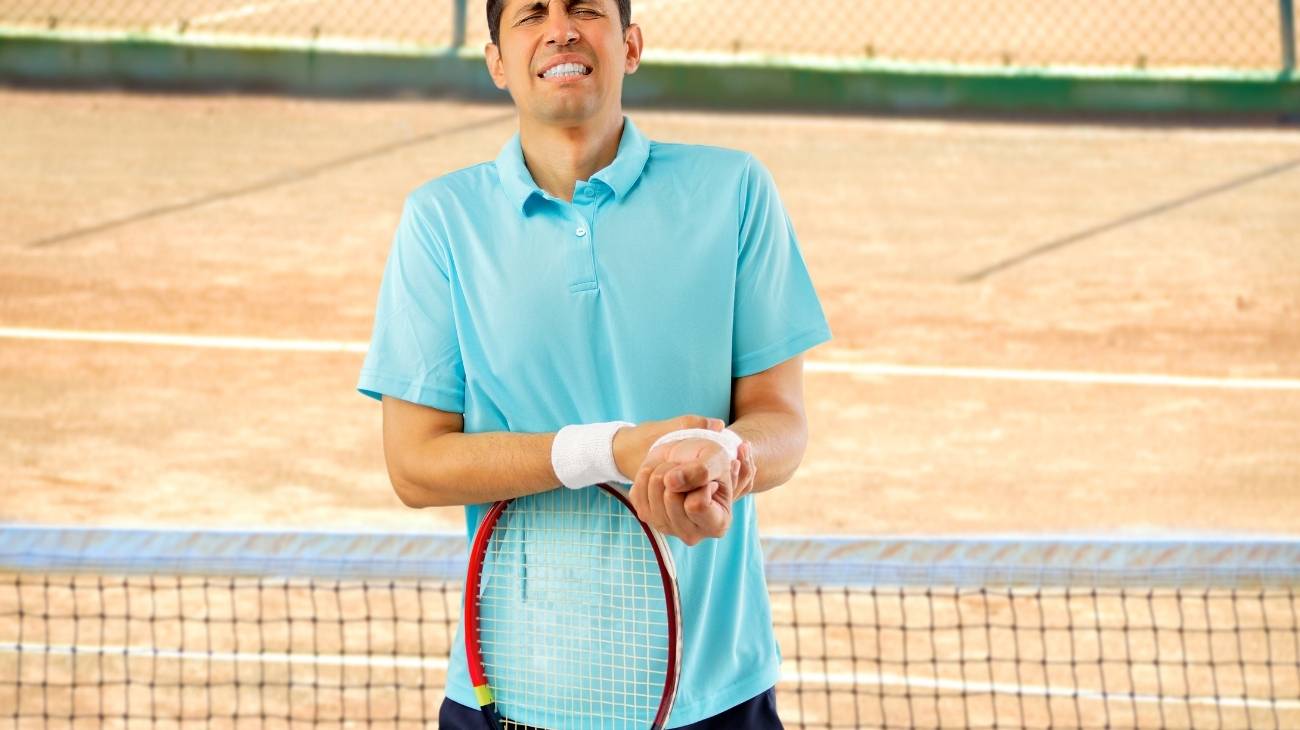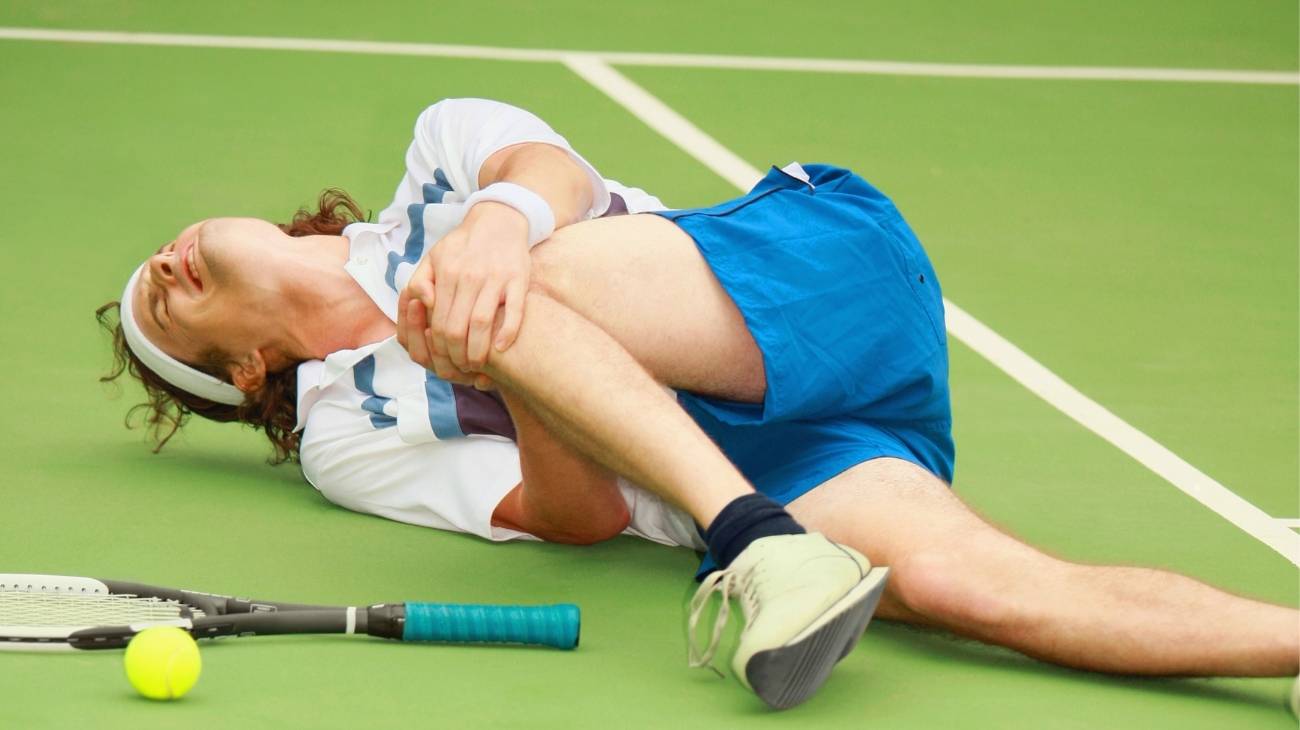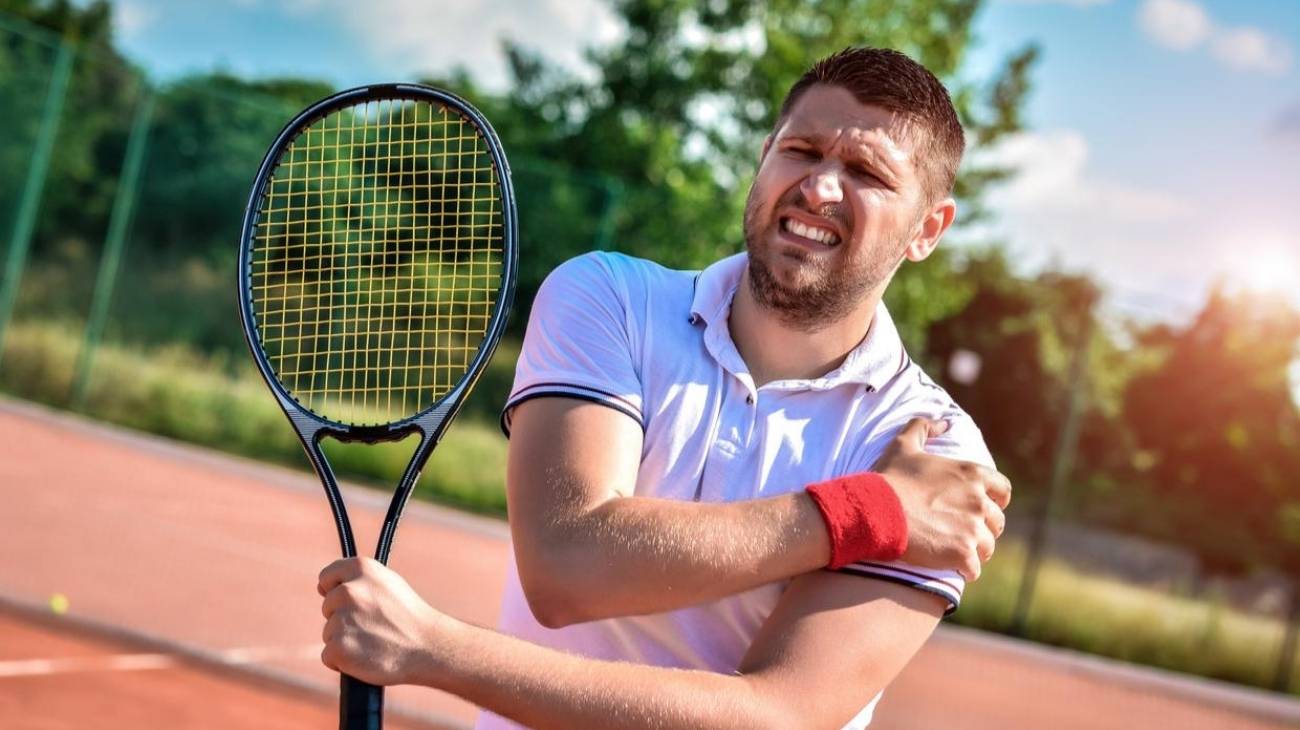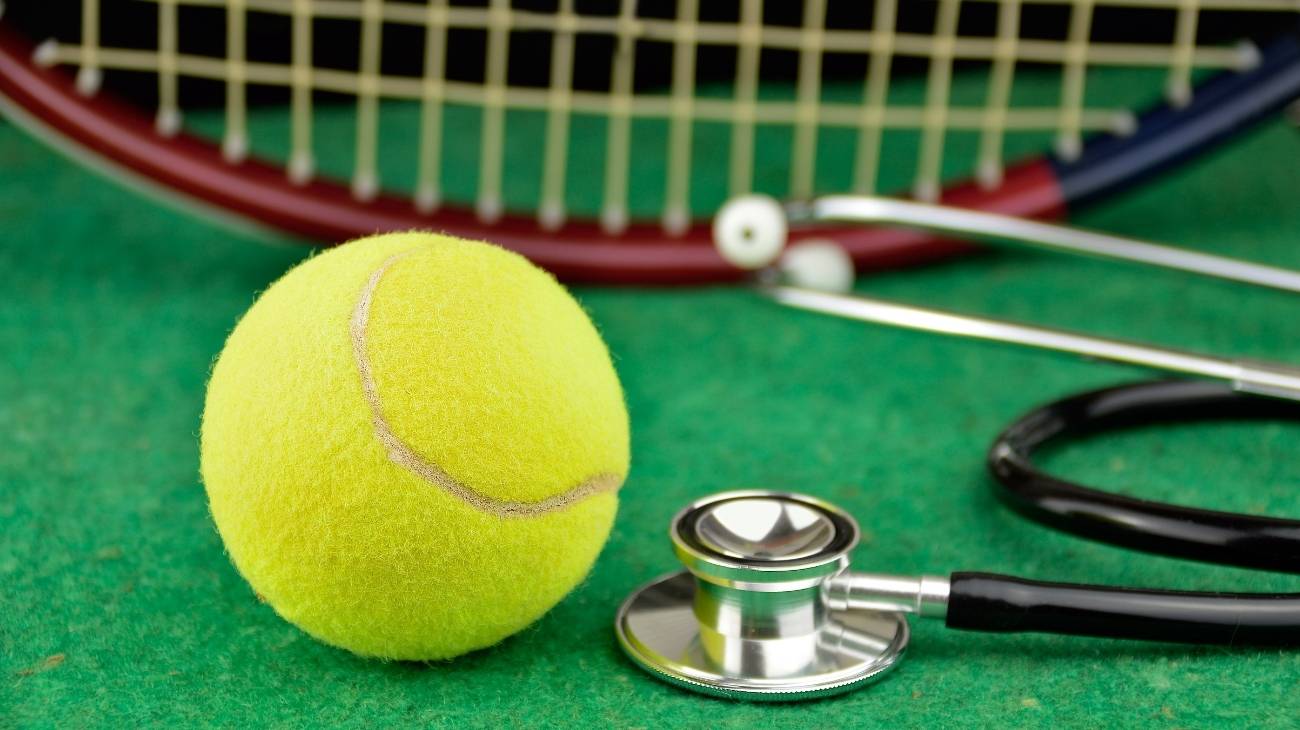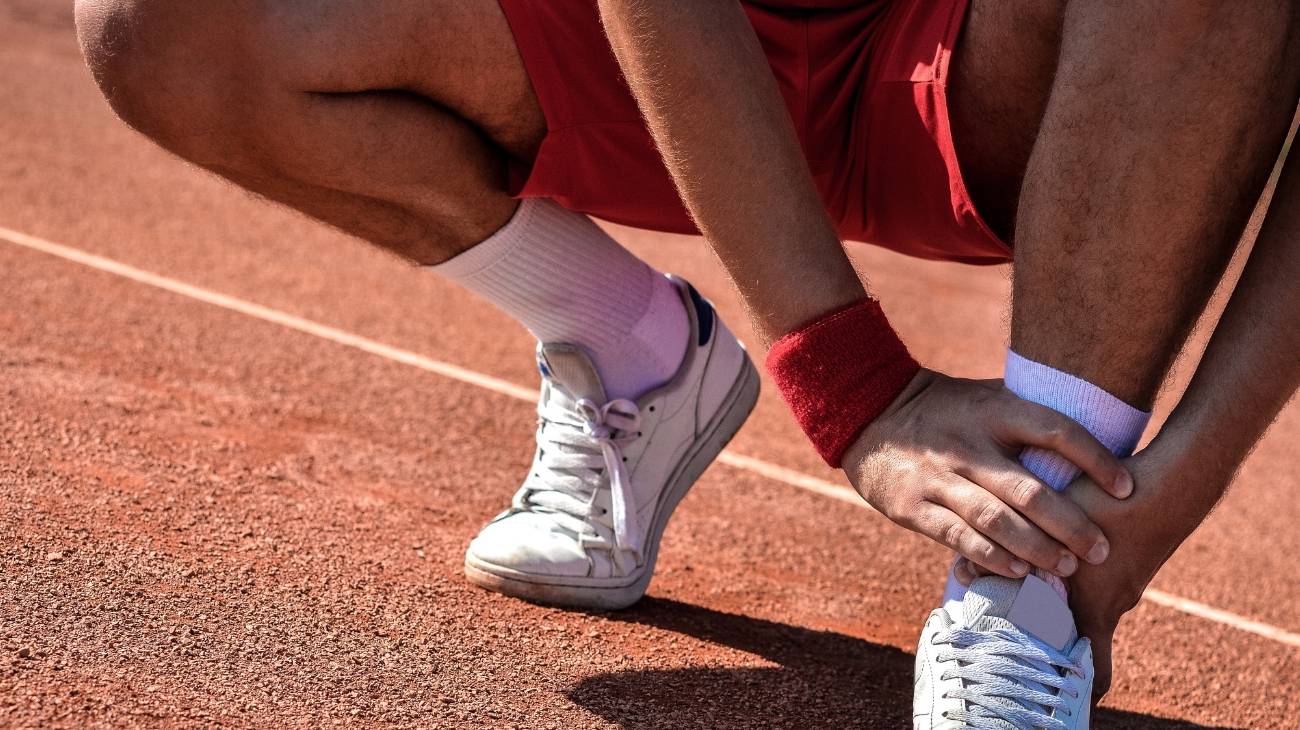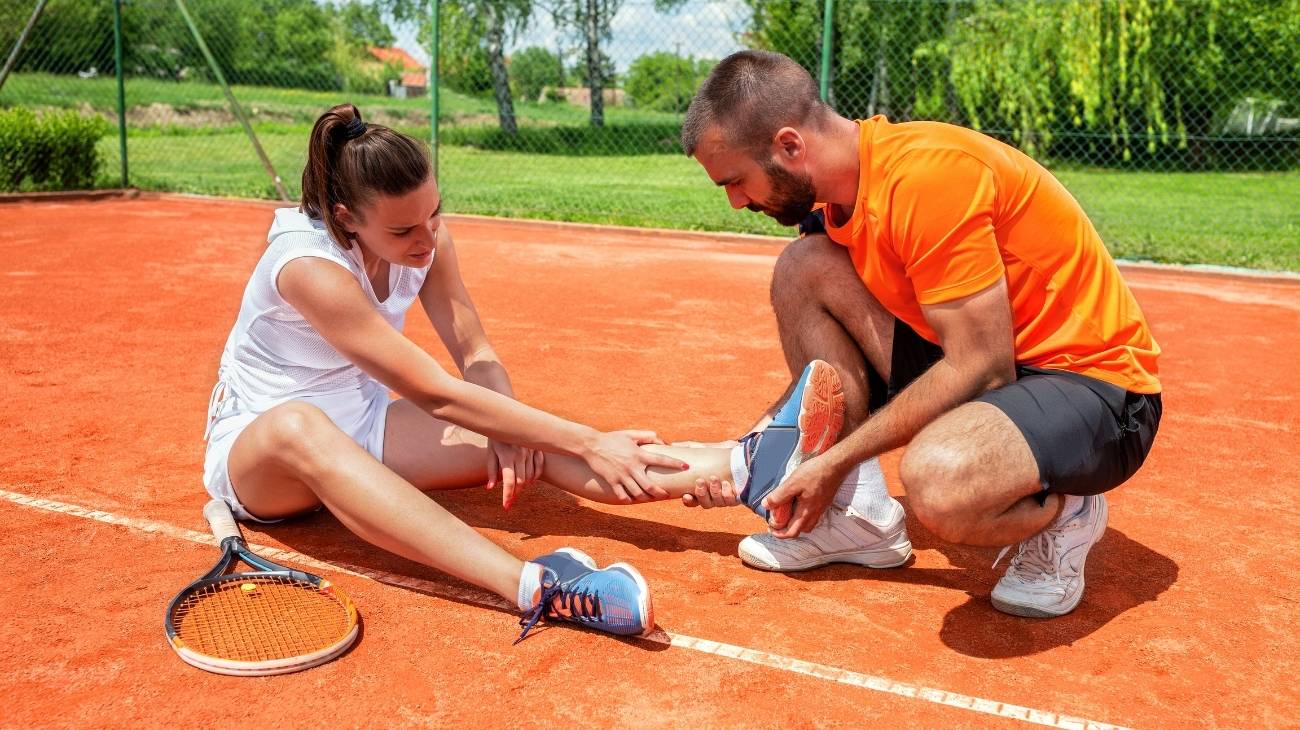Sports elbow injuries in tennis are very common painful conditions for those who practice this sport. They are usually generated by overloading the tendons caused by repetitive movements of the wrist and arm.
Therefore, in this post we want to talk to you about the most common elbow injuries caused by playing tennis, and how to apply the RICE method to treat them. However, we must clarify that these conditions do not only develop in athletes, but also in people who carry out activities with repetitive movements, such as painters, butchers, carpenters, among others.
What are the most common types of elbow injuries when we play tennis?
The elbow is made up of bones, ligaments, cartilage and fluids. For the elbow to move in its joint, it requires the help of muscles and tendons. This synovial hinge joint allows the forearm to be rotated, the hand to be moved towards and away from the body, to be bent or flexed up to 145° and stretched up to 180° in a normal condition. However, any alteration of its structure generates problems with the elbow.
Elbow injuries can be acute or chronic, depending on the type of condition. They are generated by efforts and overloading by repetitive movements while practicing tennis, or other activities of excessive use. In general, they cause pain, inflammation, limited range of motion, numbness, tingling, among others.
Below, we will tell you about the most common types of elbow injuries when playing tennis:
Lateral epicondylitis
Also known as "tennis elbow", it is a type of tendonitis caused by excessive use and repetitive gripping while using the thumb and first two fingers. This injury is generated in a progressive way, and can reach a chronic state, affecting the tendons on the outside of the elbow joint, generating pain in the elbow and arm and weakness in the grip.
Although this sports injury is very common in people who play tennis, it is not exclusive to those who practice this sport. It also affects athletes who practice racquet sports, fencing, squash, weight lifting, or other activities that require repetitive movements with grip, such as painting, transcribing, raking, among others.
Osteoarthritis
This is an elbow injury that affects the cartilage. It can be caused by trauma or wear and tear on the joints, causing damage to this type of connective tissue. Although it is not an exclusive injury from playing tennis, the wear and tear on the cartilage that protects the bones could be caused by overuse. This wear and tear causes them to rub against each other, causing deformation, swelling and pain.
Dislocation or fracture of the elbow
It is possible that, during a tennis match, a fall on the extended arm or elbow may occur, generating a dislocation or fracture. Dislocation occurs if the bone moves from its original position, while the fracture causes the bone to break or crack. With this type of injury you will notice swelling and discoloration of the elbow, pain and inability to move.
Ligament sprains
This type of injury could be generated in any of the ligaments located in the elbow joint. Playing tennis or other activities that cause trauma to the ligament (stretching, partial or complete tearing) or repeated stress, are some of the causes of this type of condition. When the injury occurs, a clicking sound will be heard, accompanied by pain, swelling, joint instability and problems with range of motion.
Osteochondritis Dissecans
Also known as Panner's disease, it is a type of injury resulting from a sports injury to the elbow while playing tennis or other sports involving excessive use. Bone and small pieces of cartilage are detached from the elbow joint, causing pain and tenderness on the outside. It also makes it difficult to extend the arm.
Flexor tendinitis
This is an inflammation of the flexor/pronator tendons that generate pain on the inside of the elbow when hit. These tendons are attached to the bone in the upper arm, specifically on the inner side of the elbow.
Ulnar collateral ligament (UCL) injury
This type of elbow injury affects tennis players when it is their turn to serve, because of the tearing, inflammation and even complete rupture of the ligament. This generates internal pain in the elbow, affecting the range of movement.
Best products for recovery from tennis elbow injuries
Bestseller
-
2 Elbow Compression Sleeve (Black/Gray)
$19.95 -
2 Elbow Compression Sleeve (Green/Navy)
$19.95 -
2 Elbow Compression Sleeve (Pink/Bordeaux)
$19.95 -
2 Tennis Elbow Brace (Black/Gray)
$14.95 -
2 Tennis Elbow Brace (Green/Navy)
$14.95 -
2 Tennis Elbow Brace (Pink/Bordeaux)
$14.95 -
Acupressure Mat and Pillow (Black/Gray)
$49.95 -
Acupressure Mat and Pillow (Green/Navy)
$49.95 -
Acupressure Mat and Pillow (Pink/Bordeaux)
$49.95
How to apply RICE therapy to treat tennis elbow injuries?
As we've already mentioned, the repetitive movements of playing tennis can strain, wear out and damage the muscles and tendons connected to the bones of the elbow. This condition causes swelling and pain.
One of the most widely used ways of treating this type of injury is PRICE therapy, an update of the old RICE. Its acronym stands for Protection, Rest, Ice, Understanding and Elevation. A very simple technique to help reduce swelling, relieve pain and speed up healing.
We will now talk a little about what each phase of the P.R.I.C.E. protocol involves:
- Protection: During this phase the injured elbow is protected in order to avoid further damage. The athlete must avoid any activity or movement by using some kind of immobiliser.
- Rest: Once the elbow has been immobilised, it is rested rigorously, at least for the first 2 days. Avoiding that the pain intensifies and bruises are generated.
- Ice: Using cold gel compresses is indicated as one of the most effective ways to relieve pain and swelling. They should be applied in sessions of 15 to 20 minutes during the first 24 - 48 hours after the injury has occurred.
- Compression: The compression phase involves wrapping the elbow using an elastic medical bandage to prevent swelling. However, avoid placing it too tightly so that it does not interrupt blood flow.
- Elevation: Whenever possible and the pain in the elbow does not impede the range of movement, the elbow should be elevated above the level of the heart. If it is not possible to move the elbow, we recommend placing it on a pillow while you are lying on the sofa or bed. This will reduce pain, pulsation and inflammation.
The PRICE protocol is now indicated after an acute injury, resulting from a tear, sprain, strain or bruising. That is, whenever there is sudden damage that generates significant pain and swelling. In the case of tennis elbow, most of the time it is generated as a gradual and chronic process following the rupture of the tendon. Most of the time there is no inflammation present, as it is not a sudden traumatic injury.
For this reason, most medical specialists and physiotherapists maintain that the PRICE protocol should not be applied in the specific case of tennis elbow. Especially since inflammation is not the biggest problem in this type of injury. Therefore, ice may generate some contraindications, slowing down the healing process of the elbow.
In this case, they recommend using gel pads to apply heat. The application of cold should only be considered to alleviate the pain generated as an unfortunate effect of heat, only at this precise moment.
In any case, our recommendation is that you consult your trusted specialist if the problem with your elbow continues. In this way, you will receive an accurate diagnosis and start on the road to a faster and more effective recovery.
References
- Eygendaal, D., Rahussen, F. T. G., & Diercks, R. L. (2007). Biomechanics of the elbow joint in tennis players and relation to pathology. British journal of sports medicine, 41(11), 820-823. https://bjsm.bmj.com/content/41/11/820.short
- Kraushaar, B. S., & Nirschl, R. P. (1999). Tendinosis of the elbow (tennis elbow): clinical features and findings of histological, immunohistochemical, and electron microscopy studies. Journal of Bone and Joint Surgery, 81(2), 259. https://www.proquest.com/openview/8ae7310b439893743b447bbd3b9d909d/
- De Smedt, T., de Jong, A., Van Leemput, W., Lieven, D., & Van Glabbeek, F. (2007). Lateral epicondylitis in tennis: update on aetiology, biomechanics and treatment. British journal of sports medicine, 41(11), 816-819. https://bjsm.bmj.com/content/41/11/816.short
- Stasinopoulos, D., & Johnson, M. I. (2004). Cyriax physiotherapy for tennis elbow/lateral epicondylitis. British journal of sports medicine, 38(6), 675-677. https://bjsm.bmj.com/content/38/6/675.short
- Nirschl, R. P., & Pettrone, F. A. (1979). Tennis elbow. The surgical treatment of lateral epicondylitis. JBJS, 61(6), 832-839. https://journals.lww.com/jbjsjournal/abstract/1979/61060/tennis_elbow__the_surgical_treatment_of_lateral.5.aspx
- Kibler, W. B., & Safran, M. (2005). Tennis injuries. Epidemiology of Pediatric Sports Injuries: Individual Sports, 48, 120-137. https://www.karger.com/Article/Abstract/84285
- Pluim, B. M., Staal, J. B., Windler, G. E., & Jayanthi, N. (2006). Tennis injuries: occurrence, aetiology, and prevention. British journal of sports medicine, 40(5), 415-423. https://bjsm.bmj.com/content/40/5/415.short
- Dines, J. S., Bedi, A., Williams, P. N., Dodson, C. C., Ellenbecker, T. S., Altchek, D. W., … & Dines, D. M. (2015). Tennis injuries: epidemiology, pathophysiology, and treatment. JAAOS-Journal of the American Academy of Orthopaedic Surgeons, 23(3), 181-189. https://journals.lww.com/jaaos/Fulltext/2015/03000/Tennis_Injuries__Epidemiology,_Pathophysiology,.6.aspx
- Nigg, B. M., & Segesser, B. (1988). The influence of playing surfaces on the load on the locomotor system and on football and tennis injuries. Sports medicine, 5, 375-385. https://link.springer.com/article/10.2165/00007256-198805060-00003
- Bylak, J., & Hutchinson, M. R. (1998). Common sports injuries in young tennis players. Sports medicine, 26, 119-132. https://link.springer.com/article/10.2165/00007256-199826020-00005

